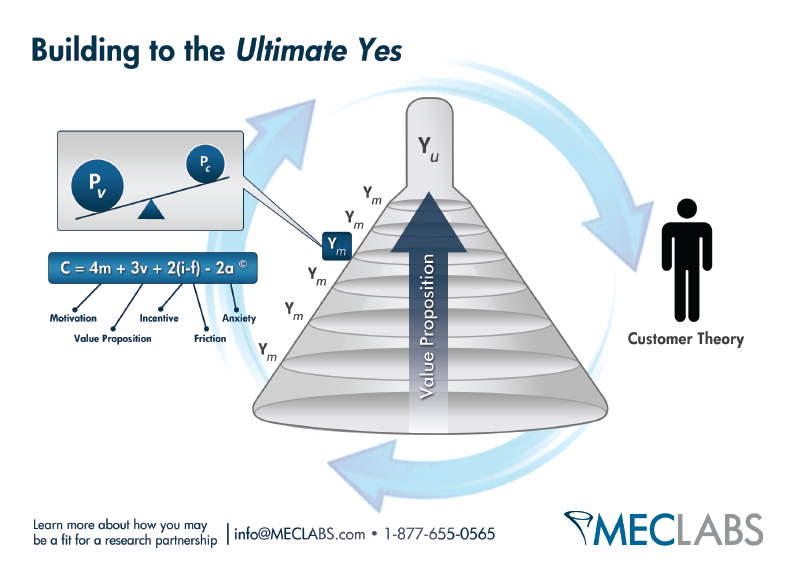Let’s start with an example.
I have an 11-year old daughter, Bailey, that intuitively understands the value of the micro-yes. It’s something she (and many other kids) seem to know from birth.
Here’s a Micro-Yes scenario:
Let’s say on Tuesday she and her best friend, Jordan, decide they’d like to have a sleepover at our house. They decide that they’d like to go to Amazing Jake’s, get DQ, and camp out in the living room to watch Netflix. Of course, dad and mom have no idea this is coming, but my daughter has a plan.
Now, she could tell me the whole plan when I pick her up from school and try to get my buy-in. But, would that be the best approach? No.
Instead, she’ll warm me up by telling me what a great dad I am when I pick her up at school. And, then casually drop in that she’d like to have Jordan over on Saturday for a sleepover.
Of course!
Then, later in the week, she might drop the line about how fun it was the last time we went to Amazing Jake’s together. We’d reminisce. And, then she’d have a great idea! “Could we all go to Amazing Jake’s during the sleepover?”
Sure!
Then, while we’re having a blast at Amazing Jake’s (with her friend next to her), “Hey could we pretty please stop for Dairy Queen on the way home.” And, they’d both break out the sad eyes.
Oooookaaay.
And, well, you get the point. She’ll get everything much more easily if she breaks those “asks” up into bite sized chunks. What’s crazy is, growing up, we all intuitively know this – and it worked to such great effect as children.
If employee experience is not something you’re actively monitoring, you should take steps to do it today. There’s no time to wait.
So, why do we so frequently forget all of this in marketing AND sales?
How often do we see websites with a buy-now button without a flow through the benefits and value proposition?
How many cold emails have we all received with a pitch before so much as an introduction to a value prop?
The Micro-Yes Approach
This graphic by MECLABS shows the road to the Ultimate Yes – a conversion – including all the parts or decision points that can be optimized themselves to increase your conversion rate or probability of a sale.

The Ultimate Yes
The Ultimate Yes is at the top of the funnel denoted by Yu. This is the conversion action you would like your customers to take. This is likely a purchase. For a non-profit organization, though, it might be securing a donation.
Micro-Yes: The Key to the Ultimate Yes
Before getting to Yu, there are a series of smaller decision points. Each of these must have a micro-yes (Ym), in order to get to a Yu. If at any point along the process your potential customer says no, you can’t get the sale. Even more important, if you try and rush to the Yu, the likelihood of a no increases significantly.
For example, if your conversion goal is to get someone to purchase a product via e-commerce, the decision path to micro-yeses might look like this:
- Customer opens an email = Ym
- Customer reads email due to email headline = Ym
- Customer takes the CTA due to email body copy = Ym
- Landing page headline leads to reading the landing page = Ym
- Landing page body copy gets the reader down to the call-to-action = Ym
- Landing page call-to-action is accepted = Ym etc.
If your conversion goal is to get someone to purchase a SaaS subscription from a sales rep:
- Subject line (yes gets an open)
- Email headline (yes gets the email read)
- Email body copy (yes to a phone call/web demo)
- The phone call sets up an agreement to receive a proposal
- Etc.
If employee experience is not something you’re actively monitoring, you should take steps to do it today. There’s no time to wait.
For each decision point, you are trying to secure a micro-yes. Think of them as nods in a sales meeting. The more nods your customer provides in a sales meetings are agreements or Yms or micro-yeses. Over time as you get those yeses from your leads, you are developing a relationship and building trust.
Your prospect is weighing the perceived value of the action you’re asking him to take versus the perceived cost of that action (denoted by Pv and Pc in the graphic). And, the more someone is saying yes the snowball starts to take effect.
Just like my daughter who got her Yu in the original example.
Note: This article was originally published April 6, 2016 and updated and republished January 1, 2021.


